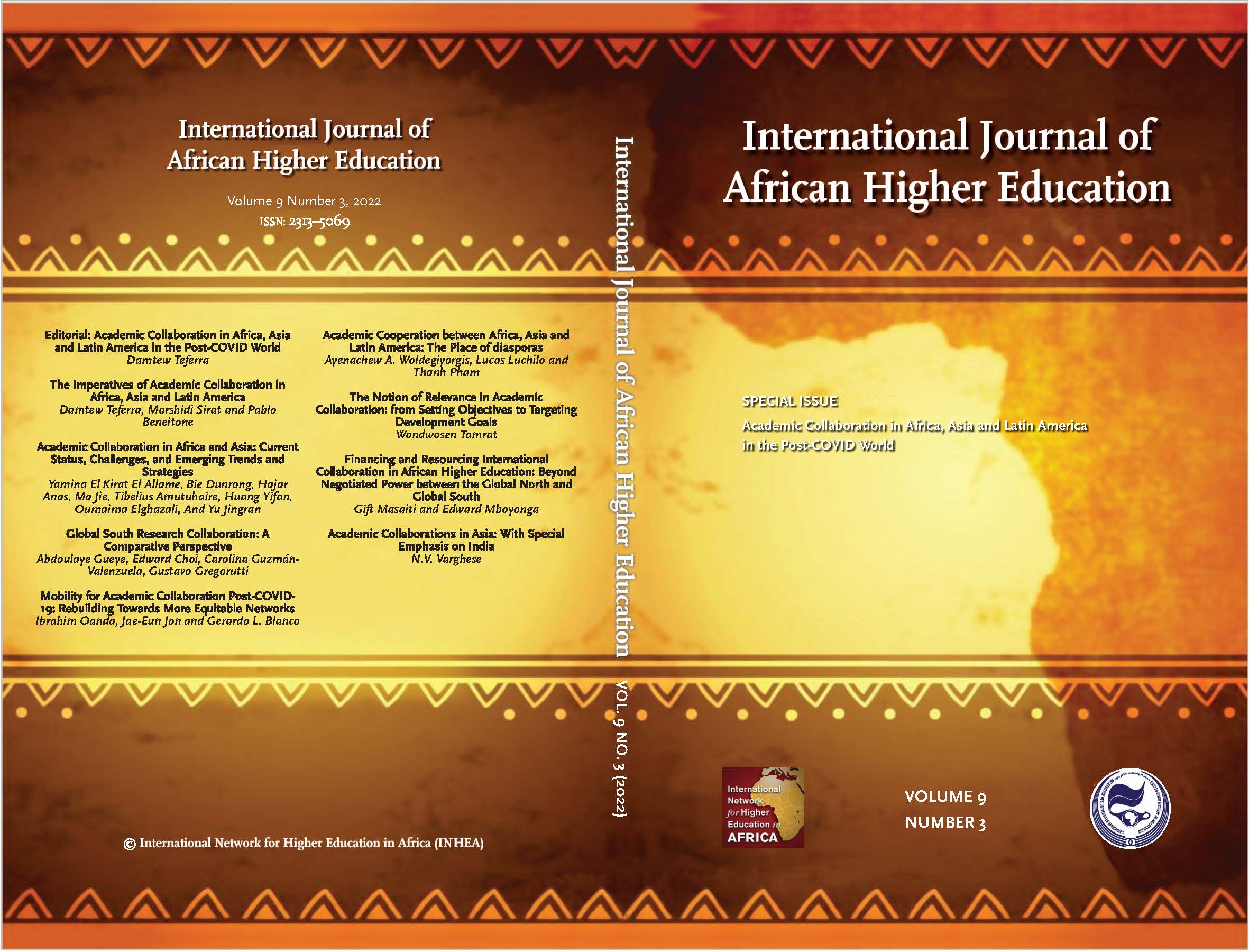The Imperatives of Academic Collaboration in Africa, Asia and Latin America
DOI:
https://doi.org/10.6017/ijahe.v9i3.16035Abstract
A multitude of intentions drives institutions to engage in academic collaborations, mainly dictated by necessity. The imperatives of academic collaboration are many and varied and include generating resources, developing academic capacity, exchanging experiences, and enhancing the institutional profile. Institutions also engage in collaboration to pursue mega initiatives (such as human genome projects) and tackle major global challenges (like climate change and diseases such as COVID-19). Such endeavours mainly take place within the framework of North-North and, to certain extent, North-South collaboration. South-South collaboration has been less evident, although this trend appears to be changing steadily with growing interest, focus and drive in these regions. For decades, academic collaboration has been touted as a positive force in knowledge creation and capacity building, particularly in the South. However, this conception has largely been framed in the context and perspective of the North. Given growing calls for a shift from traditional North-South collaborations, this article explores the imperatives of academic collaboration in the context of South-South partnerships and examines the critical factors that shape such collaboration in Africa, Asia and Latin America. It explores the intention, nature, scope and modalities of academic collaborations in the context of academic exchange, joint research/projects, joint programmes, capacity building and other relevant engagements on these continents in the post-COVID-19 era.
Downloads
Published
How to Cite
Issue
Section
License
Copyright (c) 2022 Damtew Teferra, Morshidi Sirat, Pablo Beneitone

This work is licensed under a Creative Commons Attribution-NonCommercial-NoDerivatives 4.0 International License.

